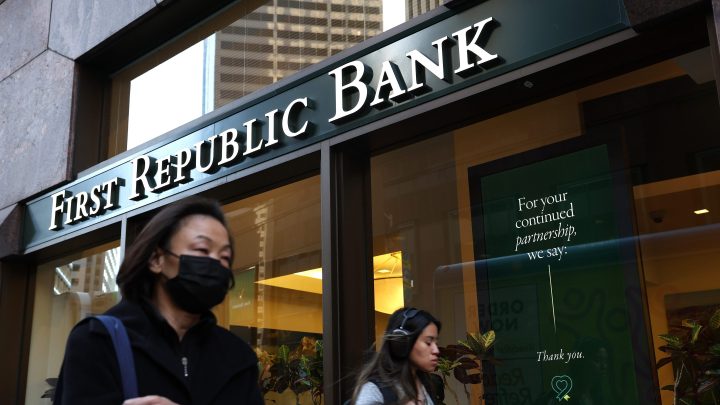
Regional banks’ problems enter the “slow burn” phase
Regional banks’ problems enter the “slow burn” phase

It’s been about five months since Silicon Valley Bank and Signature Bank collapsed. They weren’t the only banks to fail this year. First Republic folded in early May. But since then, things have been relatively calm in the banking world.
That is, until this week.
The ratings agency Moody’s announced that it downgraded the credit ratings of several regional banks, citing problems related to rising interest rates and troubled loan portfolios. A lot of the problems in the banking sector that emerged earlier this year haven’t gone away.
One big issue Moody’s cited is bank deposits. That’s because rising interest rates have put pressure on banks to prevent customers from pulling their money out.
“In order to keep those deposits, they have to pay more for that,” said Ana Arsov, Moody’s co-head of bank ratings.
Deposits started falling about a year ago. But after banks announced their second-quarter financial results last month, Arsov said, it became clear that their source of funding for loans is still strained.
“We believe that the system is relatively stable, but those funding strains will continue,” she said.
Moody’s also said a lot of regional banks could run into trouble with their commercial real estate loans, since many borrowers aren’t producing revenue from all the offices that are still sitting vacant.
“The smaller banks tend to have more of that local footprint, so that makes them a little bit more susceptible to commercial real estate and commercial office space as well,” said Stephen Biggar, a bank analyst with Argus Research.
Biggar said banks are well aware that some of those loans could go bad. And they have been taking steps to prepare: “Adding more to loan loss provisions and doing more to the credit underwriting to make them less susceptible to future problems in that area.”
Regulators have stepped in too, with proposals meant to make the banking sector healthier overall.
But regulators aren’t likely to impose new rules that quickly, said Kathryn Judge, a law professor at Columbia.
“Generally speaking, you don’t want to force banks to undergo significant and costly changes during periods of time when credit is less available,” Judge said.
She said this week’s downgrades are a sign that that period of time is going to last a while, even though dramatic bank failures, like those earlier this year, are likely behind us. “We’ve instead shifted to the mode of the turmoil that is more of a slow burn, where the various challenges that these banks are facing continue to persist.”
That means regional banks will keep paying more interest to depositors and lending out less of their deposits.
There’s a lot happening in the world. Through it all, Marketplace is here for you.
You rely on Marketplace to break down the world’s events and tell you how it affects you in a fact-based, approachable way. We rely on your financial support to keep making that possible.
Your donation today powers the independent journalism that you rely on. For just $5/month, you can help sustain Marketplace so we can keep reporting on the things that matter to you.


















